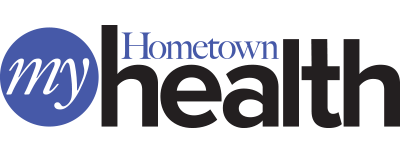The #1 health problem in the United States is heart disease, the narrowing or blockage of the arteries or veins that provide oxygen and blood to the heart and body tissue. Left untreated, heart disease can lead to a heart attack or stroke. With February being American Heart Month, Hometown Hospital wants you and your family to know that we have the technology, the services and the expertise to detect and treat heart disease. Here are just some of the services we provide.
24/7 ER: Every second counts when a heart attack or stroke occurs. And that makes Hometown Hospital, your first choice for emergency services. Our 24/7 Emergency Department features expert physician specialists, a full array of diagnostic technology, comprehensive surgical capabilities, and many other life-saving resources.
TeleStroke: With our TeleStroke program, our onsite medical team uses a video-conference link to work with a specially trained vascular neurologist at a major out-of-town hospital to evaluate, diagnosis and direct the care of stroke patients.
EKG: An EKG (short for electrocardiogram) checks the heart’s electrical activity and rhythm. An EKG is often used to find the cause of unexplained chest pain as well as other symptoms of heart disease, such as irregular heartbeats, shortness of breath, dizziness or fainting.
Stress Test: Sometimes called a treadmill or exercise test, a stress test is used to locate the cause of chest pain. During the test, the patient begins to walk on a treadmill at a slow pace and then gradually increases speed. The patient’s heart rate, blood pressure and breathing are constantly monitored, and an EKG (see above) measures the response of the heart to the stress of exercising.
Holter Monitoring: A Holter monitor is a portable, battery-powered device, about the size of a small camera. It’s used to check out and diagnose heart rhythm disturbances such as palpitations or arrhythmia. The Holter monitor records the heart’s activity over a 24-hour period or longer as the patient goes about his or her activities. The information collected is then analyzed by a cardiologist to determine the cause of the symptoms.
Cardiac Catheterization: This medical procedure is used to both diagnose and treat heart disease.
A Coronary Angiogram is used to diagnose heart disease. A small hollow tube called a catheter is gently inserted into a vein or artery and threaded through the blood vessels to the heart. A special dye is then injected through the catheter. This dye is easy to see on X-ray images, which allows physicians to check the blood flow and pressure in the chambers of the heart and locate narrowing or blockage of the blood vessels.
If heart disease is detected, cardiac catheterization can be used to correct the problem.
Angioplasty is an effective procedure for opening up a clogged artery. A small balloon is inserted into the artery and then inflated. A small wire tube called a stent is then placed in the artery to help keep it open.
Peripheral Angioplasty is used to examine arteries in the legs and other parts of the body to diagnose and treat hardening and narrowing of the arteries.
Cardiac Rehab: After a heart attack, people who participate in a cardiac rehab program have a 50 percent greater survival rate after three years compared to people who don’t. Unfortunately, only about half of heart attack victims participate fully in a cardiac rehab program.
Our team of cardiologists, nurses, dieticians and physical therapists can help you stop smoking, manage your blood pressure, create a heart-healthy diet, and develop an exercise program customized to your specific needs and goals.
Stroke Rehab: After hospitalization for a stroke, many patient still have problems with physical mobility, speech and mental functions. In fact, stroke is the leading cause of serious, long-term disability in the United States. Fortunately, through rehabilitation, stroke victims can relearn many of the skills they’ve lost, regain their independence and improve the quality of their lives.
Rehabilitation can include the following physical activities:
- Motor-skill Exercises that improve muscle strength and coordination.
- Mobility Training using a walker, cane and other mobility aids that help the patient learn how to walk again.
- Forced-use Therapy that restrains the unaffected arm or leg in order to improve the function of the affected limb.
- Range of Motion Therapy improves strength and flexibility in the joints and limbs.
- Speech and Occupational Therapy helps patients who have memory issues, have trouble speaking and communicating with words or need to improve their social skills and problem-solving abilities.
Sources: Mayo Clinic, American Heart Association, CDC
